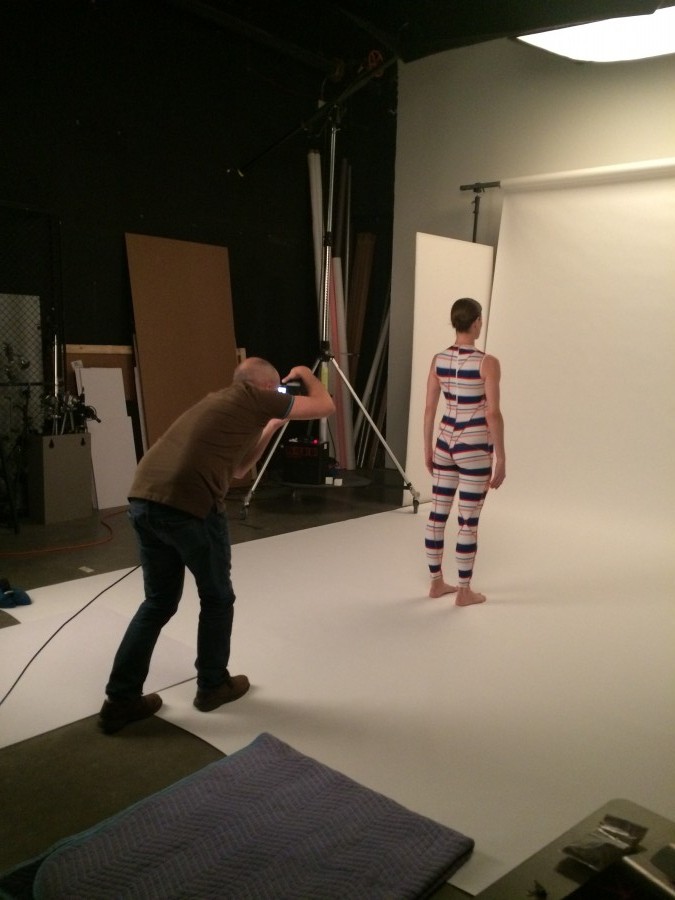
For the past two weeks, eleven Minneapolis-based dancers have spent their days at the Walker Art Center playing dress-up in Merce Cunningham Dance Company costumes. Nearly a hundred costumes from more than fifty different dances were documented–forming a representative sample of the thousands of costumes in the Merce Cunningham Dance Company Collection. The resulting images will soon be featured on the Walker’s Collections website .
Each day, either an individual or a group of working local dancers—representing the James Sewell Ballet, Tu Dance, the Body Cartography Project, as well as accomplished dance makers in their own rights—momentarily embodied members of the Merce Cunningham Dance Company. Working with Julie Voigt, senior programming officer in the Walker’s Performing Arts department and Sally Rousse, co-founder and former artistic associate of the James Sewell Ballet, we choose dancers who could wear the diverse styles and sizes of costumes in collection. Some, like Parenna Lim, who had recently relocated from New York where she was a fellow with the Merce Cunningham Trust, were already familiar with Cunningham choreography. The dancers wore costumes representing the full scope of the company’s 60-plus–year run. Each day’s shoot was like a mini time capsule, with all the idiosyncrasies of each decade’s stylistic choices. Although I have been looking at historical performance photographs of these dances for months, it was only after removing the tissue paper from the sleeves and having dancers move in them was I able to reach a deeper sense of the dances for which they were designed. Studying the way in which the costume designs altered the dancer’s movements and the how they are visually read fully pairs the sense of collaboration that defines Cunningham’s methodology. One of the dancers asked: what came first the costume or the dance? The chicken or the egg? The answer is always more fluid, sometimes one gesture inspired another; often the dances came together for the first time on the performance stage, suggestive of the artists’ trust in each other and the final result.
There was a lot to be learned from seeing the Cunningham costumes on the human figure. We learned how pre-1965 costumes simply don’t stretch. The styling of tights with seams—for men and women—that carried into the ’70s. The break from the Robert Rauschenberg’s lively imagination to Jasper John’s quiet simplicity. Seeing the fit and drape of some of the costumes was a delight—David Hare’s whimsical Mysterious Adventure, the old-fashioned elegance and full skirts of Banjo, the bright spandex of eyeSpace20 or Split Sides.
Parenna Lim looks at historical performance photographs to gain inspiration:
Walker photographer Gene Pittman captures the moment:

Although the shoots were hard work, there was plenty of time for humor: here’s Anton La Mon managing to fulfill Gene’s request of holding the color chart in a headless, armless sweater from Antic Meet.
Get Walker Reader in your inbox. Sign up to receive first word about our original videos, commissioned essays, curatorial perspectives, and artist interviews.


